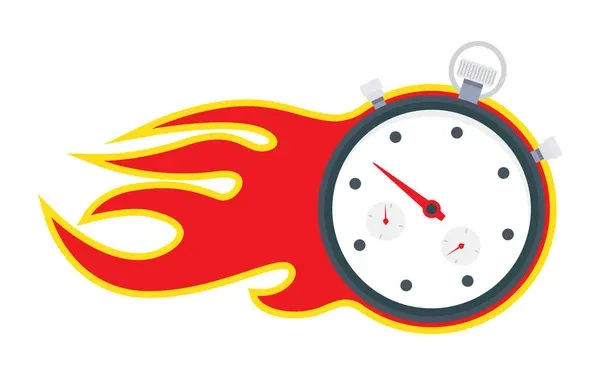Staying Ahead: Shopify SEO Trends to Watch in 2024

In 2024, Shopify SEO is more important than ever, as search engines continue to evolve and online stores strive to capture potential customers’ attention. As the ecommerce site landscape continues to evolve alongside Shopify SEO, it's crucial to understand the role of search engine optimization as a key component of staying ahead in the competitive ecommerce environment. The way people search and interact with online stores is changing, making it essential to stay updated on the latest trends in Shopify SEO. In this blog post, we’ll explore the top Shopify SEO trends you should watch out for in 2024.
Shopify SEO Trends to Watch in 2024
Now, let's take a look at all the new raves about SEO trends in 2024!
Emphasis on Search Intent
Search engines are getting smarter at understanding user intent, which means that optimizing your Shopify store for search intent should be a top priority. By aligning your content with what your audience is searching for, you can improve your search engine rankings and attract more traffic.
- Use keyword research tools: Leverage tools to identify and incorporate the target keyword into your Shopify store's content, image names, headings, and meta descriptions strategy, ensuring optimization without resorting to keyword stuffing.
- Create relevant content: Craft content that matches user queries to increase your store’s visibility on search engine results pages (SERPs).
Google Search Console and Google Analytics
These tools are essential for monitoring your Shopify store's SEO performance and making data-driven decisions.
- Utilize Google Search Console: Track organic search performance, including clicks, impressions, and keyword rankings.
- Leverage Google Analytics: Gain insights into user behavior, site performance, and areas for improvement.
By staying informed and using these tools effectively, you can optimize your Shopify store and improve its performance in search engine results.
Optimized Meta Tags and Descriptions
Meta tags and descriptions play a key role in how your Shopify store appears on search engine results pages (SERPs). Crafting them with care can help improve your store's visibility and click-through rates.
- Create compelling meta descriptions: A well-written meta description should summarize the page content and include target keywords. Aim for clarity and conciseness to entice users to click through to your store.
- Optimize title tags: Title tags should accurately represent the content on each page and include target keywords. Keep them within the recommended character limit to ensure they display properly in search results.
By focusing on optimizing meta tags and descriptions, you can improve your Shopify store's appearance in search results and attract more organic traffic.
Technical SEO Enhancements
A well-optimized Shopify store goes beyond just content; technical SEO plays a critical role in ensuring your site is easily accessible and indexable by search engines.
- Fix broken links: Regularly check for and repair broken links on your site to maintain a seamless user experience and avoid negatively impacting your SEO performance.
- Use schema markup: Structured data can enhance your store's appearance in search results, providing users with more detailed and relevant information.
- Implement auto-generated canonical tags: These help prevent duplicate content issues by indicating the preferred version of a page to search engines.
Focusing on technical SEO improvements can boost your site's overall performance and enhance its chances of ranking higher on search engines.
Enhanced Content Marketing and Link Building
Remember! content marketing and link building go hand in hand to boost your store's search engine rankings and visibility.
- Create high-quality blog content: Producing valuable and engaging blog posts is a great way to draw in potential customers and keep them coming back for more. Remember to optimize your blog posts for the right keywords and search terms.
- Build relationships with relevant websites: Partnering with other sites for guest posts and backlinks can increase your store's credibility and expand your reach. This can also lead to more organic traffic and higher search engine rankings.
By combining content marketing with strategic link building, you can enhance your store's online presence and create opportunities for growth.
Optimized Image SEO
Images play a significant role in improving user experience and attracting more visitors to your Shopify store. Optimizing your images for search engines can make a noticeable difference in your store's performance.
- Utilize alt text: Alt text helps search engines understand your images and their relevance to your content. Descriptive, keyword-rich alt text can boost your image SEO.
- Pay attention to search engine listing previews: Ensure your images look appealing and provide helpful information in search engine listings to entice clicks.
- Consider image size and format: Choose appropriate image sizes and formats to maintain fast page loading times, which is essential for both user experience and SEO.
By paying close attention to image SEO, you can create a more engaging and user-friendly experience for your visitors while enhancing your store's search engine performance.
Logical Site Structure and Internal Linking
A logical site structure and effective internal linking can have a major impact on your Shopify store’s SEO performance and user experience.
- Map your keywords: Organize your store’s content around your target keywords and search intent, which can help guide your site’s structure and navigation.
- Create a logical site structure: A clear and organized site layout helps both search engines and users find and understand your content. Use categories and subcategories to group related products and pages together.
- Implement internal linking: Utilize internal links to distribute 'link equity' to relevant product and category pages, ensuring all pages have internal links to improve visibility for both users and search engines. Link your important pages, product pages, category pages, and other relevant pages to each other. This strategy not only helps distribute authority across your site but also guides visitors through their shopping journey, creating a clear navigation system from the homepage designed for both user experience and search engine crawlers.
By focusing on a logical site structure and internal linking, you can improve your site’s search engine performance and create a smoother experience for your visitors.
Focus on Mobile SEO and Speed
In 2024, optimizing your Shopify store for mobile users and ensuring fast load times are more crucial than ever.
- Ensure mobile-friendliness: With more users shopping on mobile devices, make sure your site is optimized for mobile viewing. This includes responsive design and easy navigation.
- Prioritize site speed: Faster-loading pages improve user experience and boost your store’s SEO performance. Optimize images, minimize scripts, and leverage caching for speed improvements.
By concentrating on mobile SEO and site speed, you can provide a better experience for your customers and keep them coming back for more. Additionally, Google and other search engines prioritize fast, mobile-friendly sites, so these optimizations can lead to higher search engine rankings.
Actionable Tips for Optimizing Your Shopify Store
Now that you understand the latest Shopify SEO trends, let’s talk about some actionable tips to help you optimize your Shopify store for better search engine performance.
- Create content that aligns with trends and optimize your online store: Keep your blog posts and product descriptions up to date with the latest SEO strategies. Align your content with search intent, incorporate relevant keywords, and enhance your Shopify online store for search engines by using SEO-friendly features and implementing structured data.
- Use free tools for keyword research and tracking: Utilize free SEO tools to identify target keywords, monitor your site’s performance, and discover areas for improvement.
- Optimize page URLs, titles, and meta descriptions: Craft descriptive, keyword-rich URLs, titles, and meta descriptions for each page. These small details can make a big difference in how your site appears in search results.
- Check for broken links and improve site structure: Regularly scan your site for broken links and inconsistencies in structure. Fixing these issues can help maintain a seamless user experience and boost your SEO performance.
- Seek professional SEO services: If you’re unsure where to begin or need in-depth optimization, consider consulting with an SEO professional to guide you through the process.
By implementing these tips and staying on top of the latest trends, you can maintain and improve your Shopify store’s SEO performance, increasing organic traffic and helping your store stand out from the competition.
Enhance Your Shopify Store's SEO Performance with SEOPro
To wrap up, Shopify SEO in 2024 is all about staying ahead of the curve and adapting to the ever-evolving landscape of search engines. By paying attention to search intent, leveraging tools like Google Search Console and Google Analytics, and focusing on technical SEO, you can elevate your online visibility and drive more traffic to your Shopify store.
Take your SEO strategy to the next level with SEOPro. This powerful app helps you identify and resolve SEO issues, optimize your content, and improve search engine rankings. By integrating SEOPro into your approach, you'll ensure that your store is always primed for maximum visibility and success.
Remember, it's essential to create high-quality content, optimize images, and maintain a logical site structure to enhance user experience and search engine performance. By following these trends and tips, and by utilizing SEOPro, you'll be well on your way to improving your Shopify store's SEO performance and standing out in the competitive world of e-commerce!





